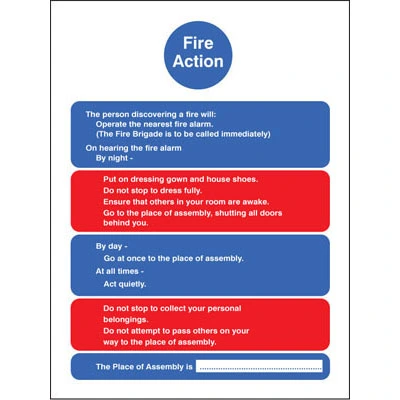In the UK, Fire Risk Assessments are a legal requirement for anyone who manages or owns a property or business, regardless of the number of employees, as per the Fire Safety Order 2005. Penalties for non-compliance can range from fines to jail time, depending on the severity of the breach.
It can be difficult to understand which type of FRA your premise requires. Read more to find out the different types of fire risk assessments that are available for you.
What types of fire risk assessments are available?
When it comes to multi-occupied premises, there are four risk assessment types:
- Type 1 – Common parts only (non-destructive)
- Type 2 – Common parts only (destructive)
- Type 3 – Common parts and flats/bedrooms (non-destructive)
- Type 4 – Common parts and flats (destructive)
The destructive element refers to a physical inspection and test of certain aspects of the building to assess its fire resistance. The assessment can include doors/walls in the communal areas and, in the case of Type 4, the habitable areas e.g Flats.
Which ones do Fire Risk Assessments offer?
FireRiskAssessments.com only carries out visual inspections, which are Type 1 and Type 3. Assessments requiring a destructive testing element are very specialised. Should you need this level of investigation because you’re not sure about the passive fire protection within your premises, we recommend that you use a fire risk assessor register to find a qualified engineer. These are provided by the Institute of Fire Engineers (IFE) or the Institute of Fire Safety Managers (IFSM). You can also search on the member’s list of the Association for Specialist Fire Protection (ASFP)
Type 1 fire risk assessment
For a Type 1 fire risk assessment, we carry out a visual inspection of the communal parts of the building. The inspection is normally for or on behalf of the Landlord, Building manager, Freeholder or Residents Association. Occasionally we are asked to carry out the assessment on behalf of a resident who is selling their premises when there isn’t a valid fire risk assessment in place, and they are asked to supply one by their solicitors.
A Type 1 fire risk assessment involves visually inspecting the fire safety provisions. Ensuring there is regular maintenance and testing of any fire safety equipment, and that this is recorded in a Logbook. A Type 1 assessment also needs to include the fire doors leading onto the communal parts. We recognise that it isn’t always possible to gain access to all the Flat doors. However, we ask that you arrange for access to at least sample some of them to get a more comprehensive assessment and report.
New legislation introduced in April 2021 (Fire Safety Act) clarifies that where a building contains 2 or more sets of domestic premises, the Fire Safety Order applies to:
- the building’s structure and external walls (including windows, balconies, cladding, insulation and fixings) and any common parts
- all doors between domestic premises and common parts such as flat entrance doors (or any other relevant doors)
Type 3 fire risk assessment
A Type 3 fire risk assessment is a visual inspection that covers both the common area AND the domestic premises. This can be the Flats or the individual bedrooms in the case of Houses of Multiple Occupancy (HMO). Domestic premises are not covered under the Fire Safety legislation, therefore any recommendations made regarding the domestic dwelling are not enforceable. However, if the Responsible Person wants to ensure the fire safety of all the occupants, including checking the means of escape and fire safety provisions of the Flats, they may require a Type 3.

A Type 3 assessment may be particularly relevant to Landlords purchasing a building if they want to ensure the premises has been maintained as originally designed and there haven’t been any works carried out, which could compromise the integrity of the Fire safety. For Landlords of Houses of Multiple Occupancy (HMO), a Type 3 will also be relevant, especially if they have provided fire safety equipment in the individual bedrooms or want to establish if they need to provide any.
Important distinctions
It is important to note that both the above types of assessment are visual only and are therefore limited by the amount of access available on the day. Access to assess doors is one aspect, as are the loft and void areas of your premises. Giving as much safe access as you can arrange will help to ensure a more comprehensive assessment and report.
In the case of access not being provided, it may be that further investigations will be required. This particularly applies if the evacuation strategy of your building requires a high level of fire protection, such as in the case of premises where you Stay Put in the event of fire.
It is also worth highlighting that a fire risk assessment is assessing the risk to life, NOT for the protection of the building. However, ultimately many recommendations will help to protect both.
The primary aim of the assessor is to ensure the risk of fire starting is reduced but also that occupants can get out safely should a fire break out.
